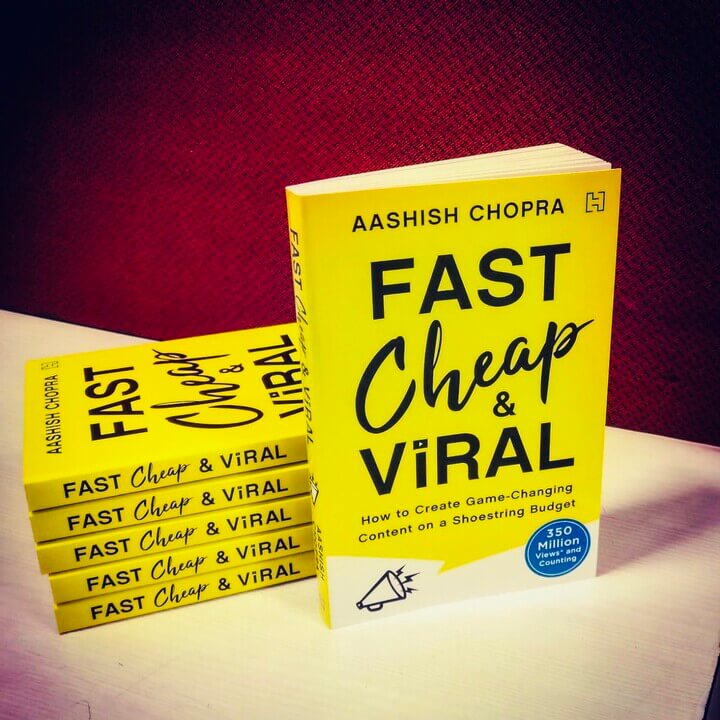
1. Every company today is a media company

For any startup founder who wants to build a brand, you need to part of conversations on social media, because that is where the audience is, and that is where they are engaged. If all companies think like media companies, they will realise that their content approach is derived from audience behaviour. Then it’s about engaging users where they are – on social media . To succeed as a brand on social media you need to churn out regular content. When you think of yourself as a media company it’s not about conventional marketing anymore. It’s about engaging your users and telling them about your kick ass product.
2. Branding today is about relevance, and not recall value

The traditional marketing thought is only about recall, recall, recall. That will no longer work online. In the same vein, whatever has worked before may no longer work today. In parallel, trust in conventional advertising has also gone down. The audience no longer believes ads, so the idea of recall alone is no longer effective. But social is built around conversations. The more conversations you are a part of, the more relevant you are. As a strategy, recall is about how many eyeballs you get, how much reach you managed. On the other hand, engagement is about touching the heart and getting that share. Like when people illegally download content videos from brands just so that they can share it on WhatsApp. That’s engagement driven by compelling content.
Marketers who understand that relevance is more important than recall can also save millions of rupees of advertising budgets. Startups can compete with big brands purely on the power of their content. The intent of content is not purchase, it is engagement. Continuous engagement through relevant content can influence purchase decisions.
3. Content marketing is the exact opposite of advertising

Advertising as we know it was about deciding the exact duration of the ads, changing the position of the logo, making it bigger, moving it here or there. The days of Doordarshan, when we had no choice but to watch whatever was being shown, are gone. No one cares about ads anymore; we are too busy in our own lives. We know today that if any brand says something it is just selling itself and nothing more. The reasons for a video being shared by the audience is completely theirs, and has nothing to do with your brand, no matter how popular or endearing. Whether it is the remote control, the alt-tab button, or our thumbs, we don’t hesitate to swipe or change the channel if we see ads, because what we are all essentially looking for is content. So, we have to create content that works is in the interest of the audience. Of course, brand integration should be worked into it.
4. The goal of all marketing content today must be its share worthiness

When we think about content, we don’t think about it as an ad, else we will lose sight of the audience and what can be useful to them.
To me, marketing is where the audience is. If something is share worthy the audience does the marketing for you. If brands don’t build share worthiness into every step of their marketing approach – the emails, the videos, the content, every single social media platform the brand is on – then it will always only be about budgets and numbers and therefore have limited impact.
5. Lack of resources is the best motivation to get creative

If you can prove an idea without a budget, then if you put money behind it imagine how big it can become. You don’t need money to validate an idea. You need action, execution and time. One of the things I like about startup culture is that we need to earn our marketing budgets. I could not have asked for a budget before I proved what I can do without any money. The production budget depends on where people will watch it. You can make a video in Rs. 8000 and you can make a video in 3L also. If you are making a video that is shown on OTT platforms, big screens or movie halls, at that scale every pixel, every colour is important. But if people are going to watching the video on their hand-held devices we don’t need such high production value. Embrace the constraints and lead with creativity.
6. Creativity can also be in curation, not necessarily creation

Understanding that creativity doesn’t always mean creating something new can solve for a lot of pain and money for young startups. For so many of us storytelling in any form means thinking fiction. We think of a character, then something happens to them, they overcome it, and we have a happy ending where the brand is shown. But content online has a tiny window of 3-6s to make an impact, and these videos are so short because they will be living on social. So fiction doesn’t work, because it needs to have an arc, and some background. It takes too much time to explain. I focus on non-fiction. This doesn’t mean that I make documentaries. For me, non-fiction means extensive audience research. There are also likely to be some things that have already been researched and written, and you can co-opt them into your content. For example, Washington Post had written an article on the kinds of things that Indians carry with them while traveling. They had mentioned things like cooker, pickle bottles, food mixes. We visualised it as a security guard opening a suitcase with all these things packed in it. That video got 8 million views.
7. The first idea that comes to your mind is usually the wrong idea

My first idea is usually born out of existing programming, my personal world view. If I execute that it will end up being the same as all that has already been created till now. But if we keep ideating, keep listing pain points, keep thinking, seemingly indefinitely, something worthwhile will come up. Continuous and obsessive curation, of insights and pain points is everything according to me, because this is how ideas are born. Then we don’t need to force them out of somewhere
8. Create content like it’s a selfie - front and centre

To me, making videos for mobile screens means that the visuals are adjusted for the mobile device screen – they are clutter free, and people are able to understand what is happening. The action that is happening has to be front and centre, and it has to clearly understood by any viewer, hence the selfie analogy. I hate it when videos start with text in tiny fonts. As a viewer-I don’t want to have to work to see this video!
9. Outreach is the most underrated strategy for content distribution

When you create a video you should validate it before putting budgets behind it. Show it to family and friends. Share it in the office circle. The people who work for the company should care enough to watch and share it. Then if you put budgets behind it there is likely to be some impact. Spending money to promote a video is easier than validating an idea. Journalists, people who run communities, or influencers – all of them have an audience looking for new content all the time. When you create something you need to let them know. You need to reach out to groups of influencers and journalists who work in fields or have interests related to the idea. This doesn’t mean that you can keep messaging people all the time. If you do that they will block you. You have to again curate whom you reach out to and how you communicate your pitch – write 1-2 lines about your content, make it stand out enough for the influencers to catch hold of it.
10. If I had to go back in time and give my younger self one piece of advice it would be to invest in personal branding

There is a myth that personal branding is about tooting your own horn. I want to say that this is not about you. Personal branding is about sharing what you have learnt in your journey. Personal branding is helping the younger version of you – students, freshers, young colleagues, individuals who are still struggling, figuring it out and climbing the ladder.
With personal branding you can be known by the work you do and not the company you work for. Our personal identities get so enmeshed with that of the companies we work for that it breeds job insecurity. We have all gone through it. Sharing your personal experiences can be a learning for you, and it can help others, too.
